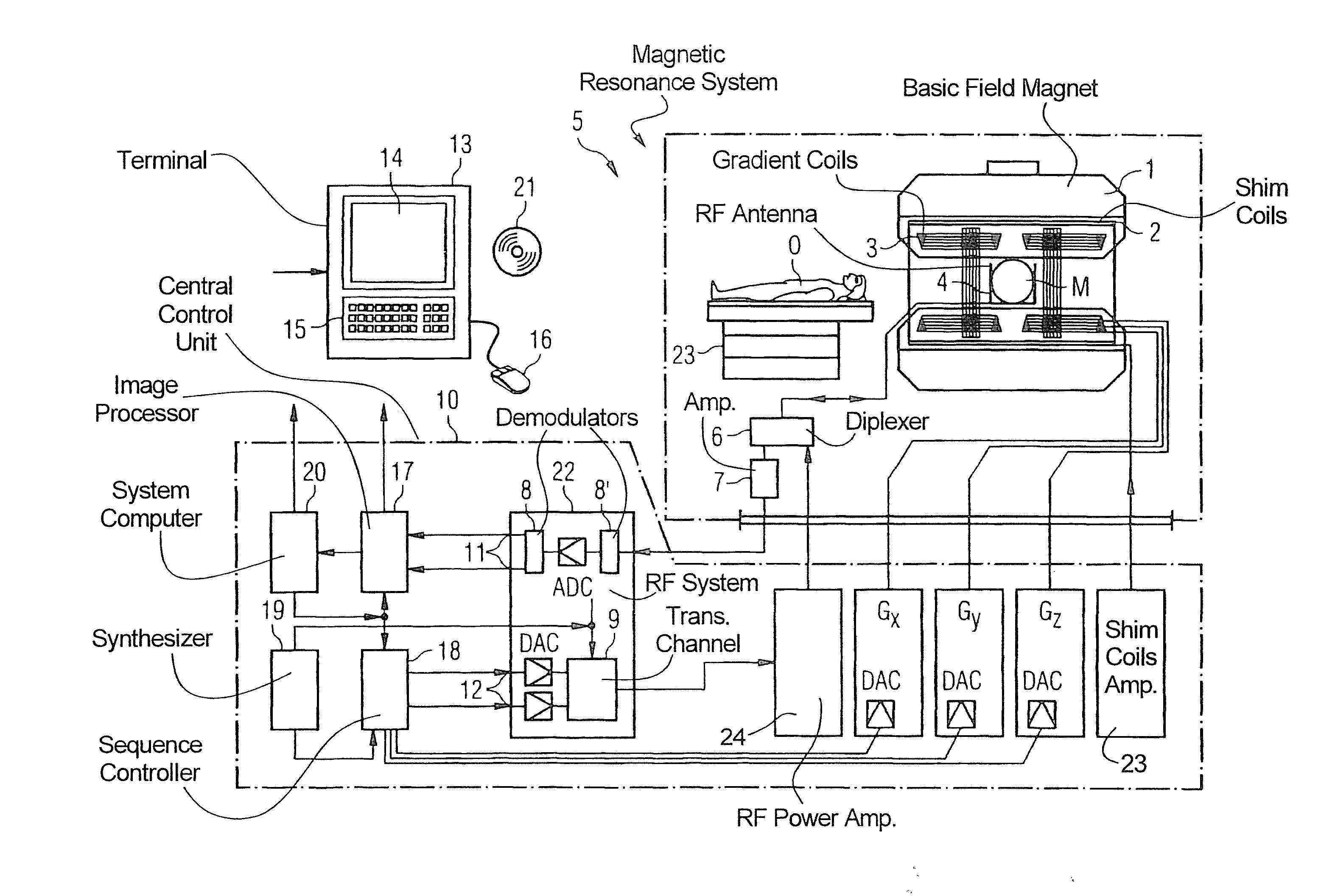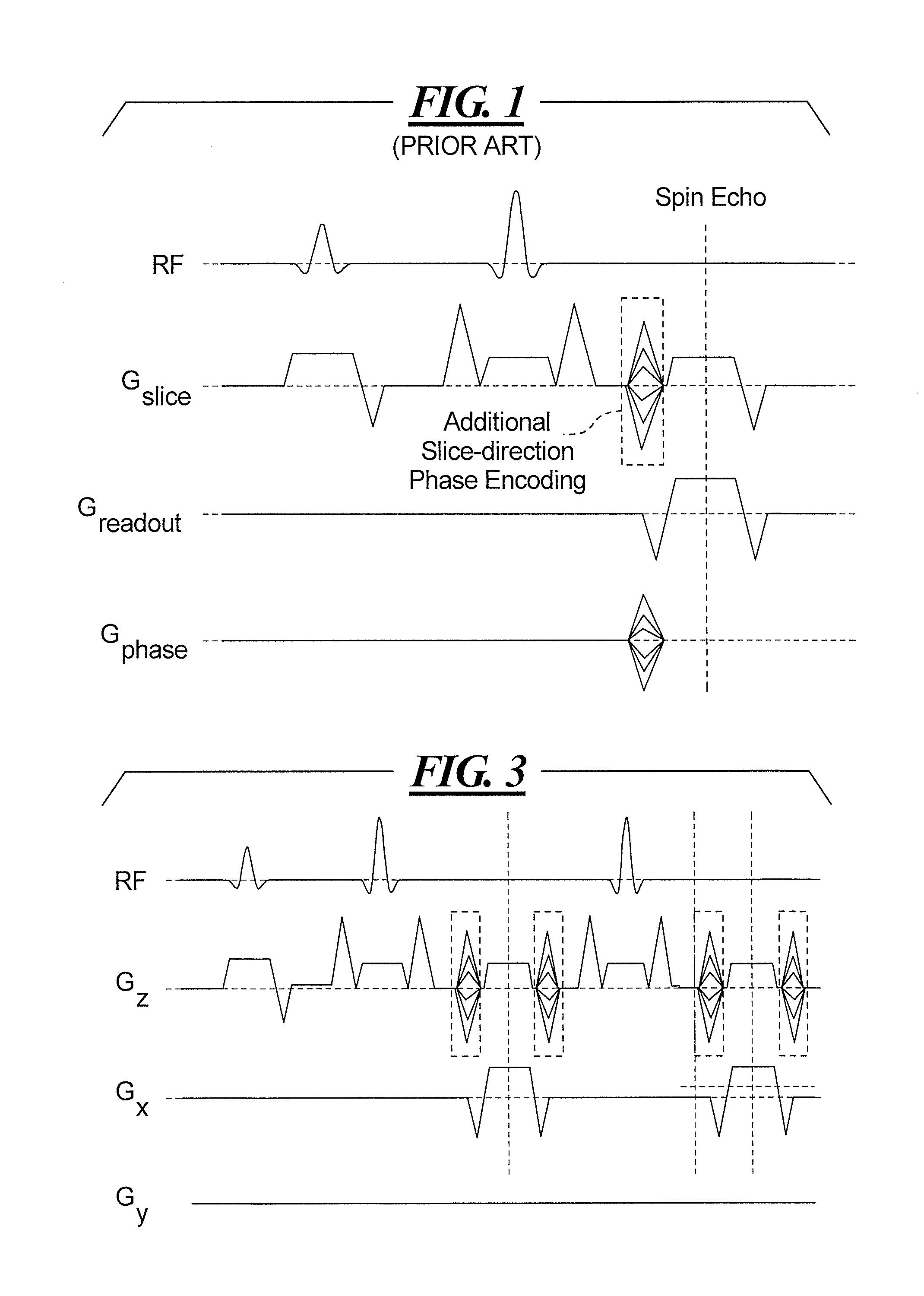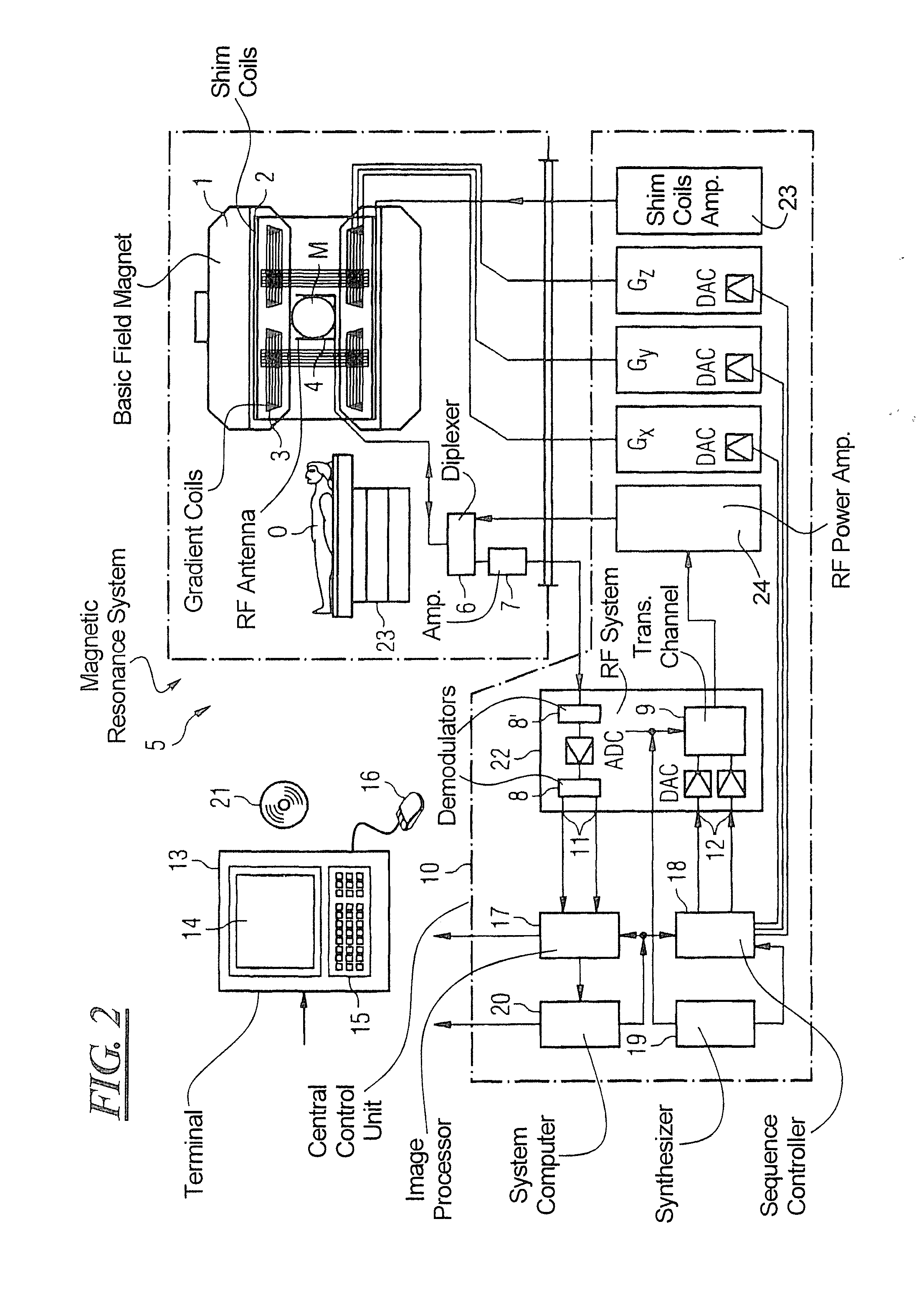Magnetic resonance method and apparatus for obtaining a scout scan of a patient containing a metallic implant
- Summary
- Abstract
- Description
- Claims
- Application Information
AI Technical Summary
Benefits of technology
Problems solved by technology
Method used
Image
Examples
Embodiment Construction
[0021]FIG. 1 schematically illustrates a conventional SEMAC method, wherein nuclear spins of an examination subject, who has a metallic implant, are excited in a known manner in a spin echo sequence by one or more RF excitation pulses. The excited nuclear spins are confined to a selected slice by a slice-selection gradient Gslice, followed by readout under a readout gradient Greadout and phase encoding by a phase-encoding gradient Gphase. As described above, in the SEMAC method, an additional slice-direction phase encoding takes place, in the block outlined with a dashed line. This additional slice-direction phase encoding takes place in multiple steps, called SEMAC steps. The basic SEMAC method is based on the technique known as view angle tilting (VAT), wherein a gradient is applied on the slice selection axis during readout, with an amplitude that is equal to that of the slice selection gradient. If readout takes place, for example, along the z-direction of a Cartesian coordinate...
PUM
 Login to View More
Login to View More Abstract
Description
Claims
Application Information
 Login to View More
Login to View More - R&D
- Intellectual Property
- Life Sciences
- Materials
- Tech Scout
- Unparalleled Data Quality
- Higher Quality Content
- 60% Fewer Hallucinations
Browse by: Latest US Patents, China's latest patents, Technical Efficacy Thesaurus, Application Domain, Technology Topic, Popular Technical Reports.
© 2025 PatSnap. All rights reserved.Legal|Privacy policy|Modern Slavery Act Transparency Statement|Sitemap|About US| Contact US: help@patsnap.com



